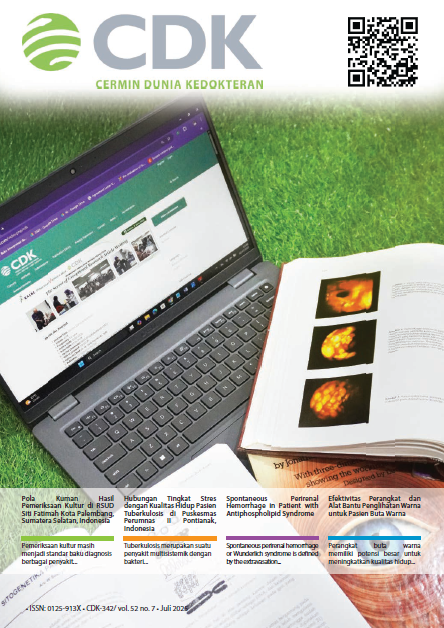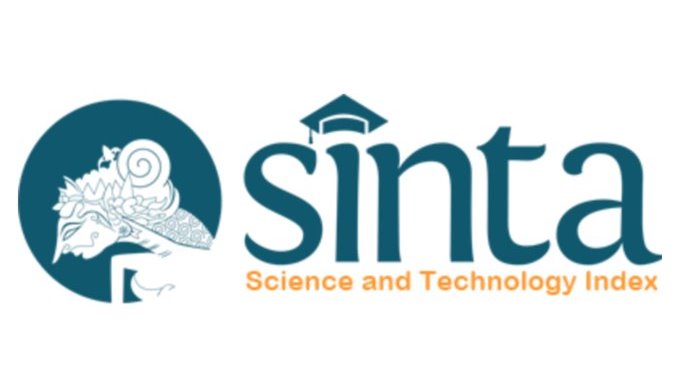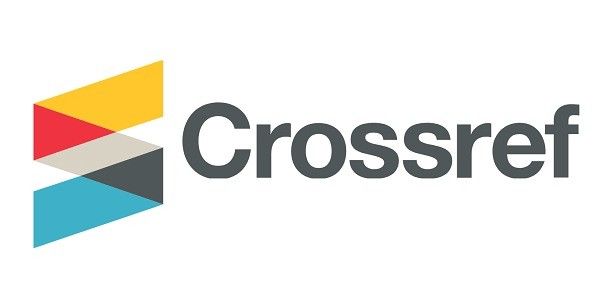Karsinoma Nasofaring: Faktor Risiko, Deteksi Dini, Diagnosis, dan Tata Laksana
Hasil Penelitian
DOI:
https://doi.org/10.55175/cdk.v52i7.1334Kata Kunci:
Infeksi virus Epstein-Barr, karsinoma nasofaring, tumor ganasAbstrak
Karsinoma nasofaring merupakan tumor ganas yang berasal dari lapisan epitel nasofaring; bersifat endemik di beberapa wilayah termasuk Indonesia. Keganasan ini menempati posisi ke-4 dalam jumlah kasus kanker terbanyak di Indonesia. Etiologinya belum diketahui sepenuhnya. Faktor risiko karsinoma melibatkan interaksi antara faktor genetik dan lingkungan, yang banyak diteliti antara lain usia, jenis kelamin, riwayat keluarga dengan karsinoma nasofaring, konsumsi makanan yang difermentasi, dan infeksi virus Epstein-Barr (EBV). Deteksi dini menggunakan serologi EBV, DNA EBV plasma, dan endoskopi. Di Indonesia, alat detektor yang umum digunakan ialah IgG NPC strip. Standar emas diagnosis adalah biopsi dan pemeriksaan histopatologi. Terapi karsinoma nasofaring sesuai stadium penyakit. Intensity-modulated radiotherapy (IMRT) mempunyai beberapa keuntungan dibandingkan radioterapi konvensional. Follow-up untuk mengevaluasi hasil dan remisi.
Unduhan
Referensi
Wei WI, Chua DT. Head and neck surgery-otolaryngology. 5th Ed. In: Bailey BJ HG, Johnson JT, Rosen CA, editors. Philadelphia: Lippincott Williams & Wilkins; 2014.
Wu L, Li C, Pan L. Nasopharyngeal carcinoma: A review of current update. Experiment Therapeutic Med. 2018;15:3687–92. DOI: 10.3892/etm.2018.5878.
Salehiniya H, Mohammadian M, Mohammadian-Hafshejani M, Mahdavifar N. Nasopharyngeal cancer in the world: Epidemiology, incidence, mortality, and risk factors. World Center Res J. 2018;5(1):e1046.
Kementerian Kesehatan. Keputusan Menteri Kesehatan Republik Indonesia Nomor HK.01.07/MENKES/684/2019 tentang Pedoman Nasional Pelayanan Kedokteran Tata Laksana Kanker Nasofaring.
Alrashed SH, Alkatan HM, Alarfaj M, Alnahdi MA, Almeshari NZ, Almutairi FJ, et al. Nasopharyngeal carcinoma (NPC) in the ophthalmic practice: A serious neoplasm presenting initially to ophthalmologists. Saudi J Ophthalmol. 2022;35(3):225–9. DOI: 10.4103/1319-4534.343369.
Soepardi EA, Iskandar N, Bashiruddin J, Restuti RD. Buku ajar ilmu kesehatan telinga, hidung, tenggorok, kepala & leher. 6th Ed. Jakarta: Badan Penerbit FKUI; 2011.
Januarti RW. Pendekatan deteksi dini non invasif karsinoma nasofaring. Wellness and Healthy Mag. 2020;2(1):61 – 8.
Mahdavifar N, Towhidi F, Makhsosi BR, Pakzad R, Moini A, Ahmadi A, et al. Incidence and mortality of nasopharynx cancer and its relationship with human development index in the world in 2012. World J Oncol. 2020;7:109-18. DOI: 10.14740/wjon980w.
Chattopadhyay NR, Chatterjee K, Das P, Chatterjee K, Choudhuri T. Higher incidence of nasopharyngeal carcinoma in some regions in the world confers for interplay between genetic factors and external stimuli. Drug Discoveries Ther. 2017;11(4):170-80. DOI: 10.5582/ddt.2017.01030.
Shah AB, Nagalli S. Nasopharyngeal carcinoma. StatPearls [Internet]. 2022 Jan. Available from: https://www.ncbi.nlm.nih.gov/books/NBK554588/.
Ho FC, Tham IW, Earnest A, Lee, Lee KM, Lu JJ. Patterns of regional lymph node metastasis of nasopharyngeal carcinoma: A meta-analysis of clinical evidence. BMC Cancer 2012;12:98. DOI: 10.1186/1471-2407-12-98.
WHO. 2014 review of cancer medicines on the WHO list of essential medicines nasopharyngeal carcinoma. Union Int Cancer Control 2014:1–9.
Old LJ, Boyse EA, Oettgen HF, Harven ED, Geering G, Williamson B, et al. Precipitating antibody in human serum to an antigen present in cultured burkitt's lymphoma cells. Proc Natl Acad Sci U S A 1966;56:1699-704. DOI: 10.1073/pnas.56.6.1699.
Bossi P, Chan AT, Trama A, Orlandi E, Hui EP, Halamkova J, et al. Nasopharyngeal carcinoma: ESMO-EURACAN Clinical Practice Guidelines for diagnosis, treatment and follow-up. Ann Oncol. 2021;32:4. DOI: 10.1016/j.annonc.2020.12.007.
Barret D, Ploner A, Chang ET, Liu Z, Zhang CX, Liu Q, et al. Past and recent salted fish and preserved food intakes are weakly associated with nasopharyngeal carcinoma risk in adults in Southern China. J Nutr. 2019;149(9):1596–605. DOI: 10.1093/jn/nxz095.
Key TJ, Allen NE, Spencer EA, Travis RC. The effect of diet on risk of cancer. Lancet 2002; 360:861-68. DOI: 10.1016/S0140-6736(02)09958-0.
Jia WH, Qin HD. Non-viral environmental risk factors for nasopharyngeal carcinoma: A systematic review. Semin Cancer Biol. 2012;22:117-26. DOI: 10.1016/j.semcancer.2012.01.009.
Xue WQ, Qin HD, Ruan HL, Shugart YY, Jia WH. Quantitative association of tobacco smoking with the risk of nasopharyngeal carcinoma: A comprehensive meta-analysis of studies conducted between 1979 and 2011. Am J Epidemiol, 2013;178:325-38. DOI: 10.1093/aje/kws479.
Chen L, Gallicchio L, Boyd-Lindsley K, Tao XG, Robinson KA, Lam TK, et al. Alcohol consumption and the risk of nasopharyngeal carcinoma: A systematic review. Nutr Cancer 2009;61(1):1-15. DOI: 10.1080/01635580802372633.
Hildesheim A, West S, DeVeyra E, De Guzman MF, Jurado A, Jones C, et al. Herbal medicine use, Epstein-Barr virus, and risk of nasopharyngeal carcinoma. Cancer Res. 1992; 52:3048-51. PMID: 1317256.
Huang J, Roosaar A, Axell T, Ye W. A prospective cohort study on poor oral hygiene and pancreatic cancer risk. Int J Cancer 2016;138:340–7. DOI: 10.1002/ijc.29710.
Yang S, Wu S, Zhou J, Chen XY. Screening for nasopharyngeal cancer. Cochrane Database Syst Rev. 2015;11:CD008423. DOI: 10.1002/14651858.CD008423.pub2.
Chan KCA, Woo JKS, King A, Zee BCY, Lam WKJ, Chan SL, et al. Analysis of plasma Epstein-Barr Virus DNA to screen for nasopharyngeal cancer. N Engl J Med. 2017;377(6):513-52. DOI: 10.1056/NEJMoa1701717.
Liu W, Chen G, Gong X, Wang Y, Zheng Y, Liao X, et al. The diagnostic value of EBV-DNA and EBV-related antibodies detection for nasopharyngeal carcinoma: A meta-analysis. Cancer Cell Int 2021;21:164. DOI: 10.1186/s12935-021-01862-7.
Direktorat Pengembangan Usaha dan Inkubasi (Dit. PUI) Universitas Gadjah Mada. NPC STRIP G [Internet]. 2021. Available from: ditpui.ugm.ac.id.
Universitas Gadjah Mada. Deteksi dini kanker nasofaring dengan cepat, mudah, dan murah [Internet]. 2014. Available from: ugm.ac.id.
Chen H, Ji M, Zong JF, Ko JMY, Dai W, Lung ML, et al. Conventional and novel diagnostic biomarkers and approaches for detection of nasopharyngeal carcinoma. Nasopharyngeal carcinoma: From etiology to clinical practice. New York: Elsevier; 2019.
Coghill AE, Pfeiffer RM, Proietti C, Hsu WL, Chien YC, Lekieffre L, et al. Identification of a novel, EBV-based antibody risk stratification signature for early detection of nasopharyngeal carcinoma in Taiwan. Clin Cancer Res. 2018;4:1305– 15. DOI: 10.1158/1078-0432.CCR-17-1929.
Huang T, Zhang Z, Zhou X. Diagnosis and therapy of nasopharyngeal carcinoma. Pharynx - Diagnosis and treatment. Intechopen; 2021. DOI: 10.5772/intechopen.99654.
American Joint Committee on Cancer. AJCC cancer staging atlas: A companion to the 7th editions of AJCC cancer staging manual and handbook. 2nd Ed. New York: Springer; 2012.
Amin MB, Greene FL, Edge SB, Compton CC, Gershenwald JE, Brookland RK, et al. The eighth edition AJCC cancer staging manual: Continuing to build a bridge from a population-based to a more "personalized" approach to cancer staging. CA Cancer J Clin. 2017;67(2):93-9. DOI: 10.3322/caac.21388.
Tang LQ, Chen DP, Guo L, Mo HY, Huang Y, Guo SS, et al. Concurrent chemoradiotherapy with nedaplatin versus cisplatin in stage II-IVB nasopharyngeal carcinoma: An open-label, non-inferiority, randomised phase 3 trial. Lancet Oncol. 2018;19(4):461-73. DOI: 10.1016/S1470-2045(18)30104-9.
Liu K, Wang J. Developing a nomogram model and prognostic analysis of nasopharyngeal squamous cell carcinoma patients: A population-based study. J Cancer Res Clin Oncol. 2023;149(13):12165-75. DOI: 10.1007/s00432-023-05120-3.
Peng WS, Xing X, Li YJ, Ding JH, Mo M, Xu TT, et al. Prognostic nomograms for nasopharyngeal carcinoma with nodal features and potential indication for N staging system: Validation and comparison of seven N stage schemes. Oral Oncol. 2023;144:106438. DOI: 10.1016/j.oraloncology.2023.106438.
Unduhan
Diterbitkan
Cara Mengutip
Terbitan
Bagian
Lisensi
Hak Cipta (c) 2025 Evita Zevanya, Arin Dwi Iswarini

Artikel ini berlisensi Creative Commons Attribution-NonCommercial 4.0 International License.





















